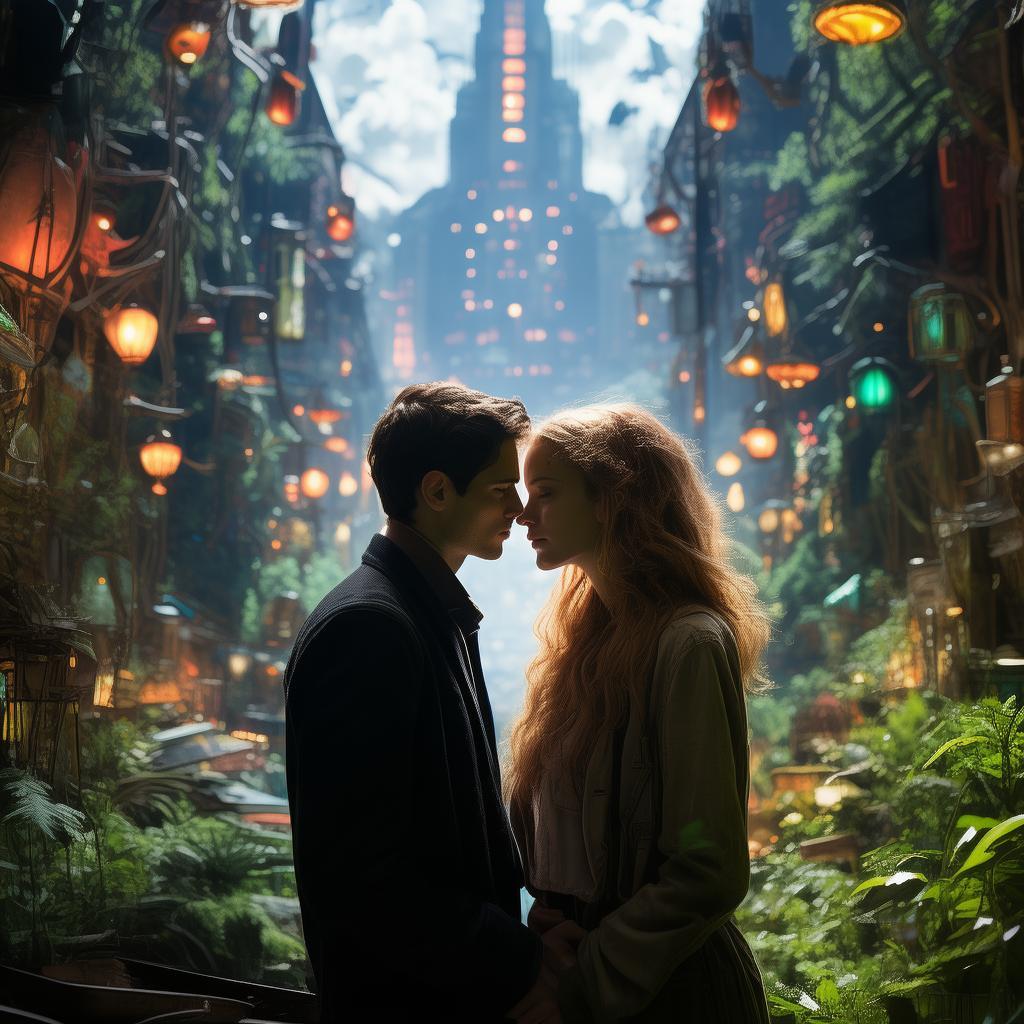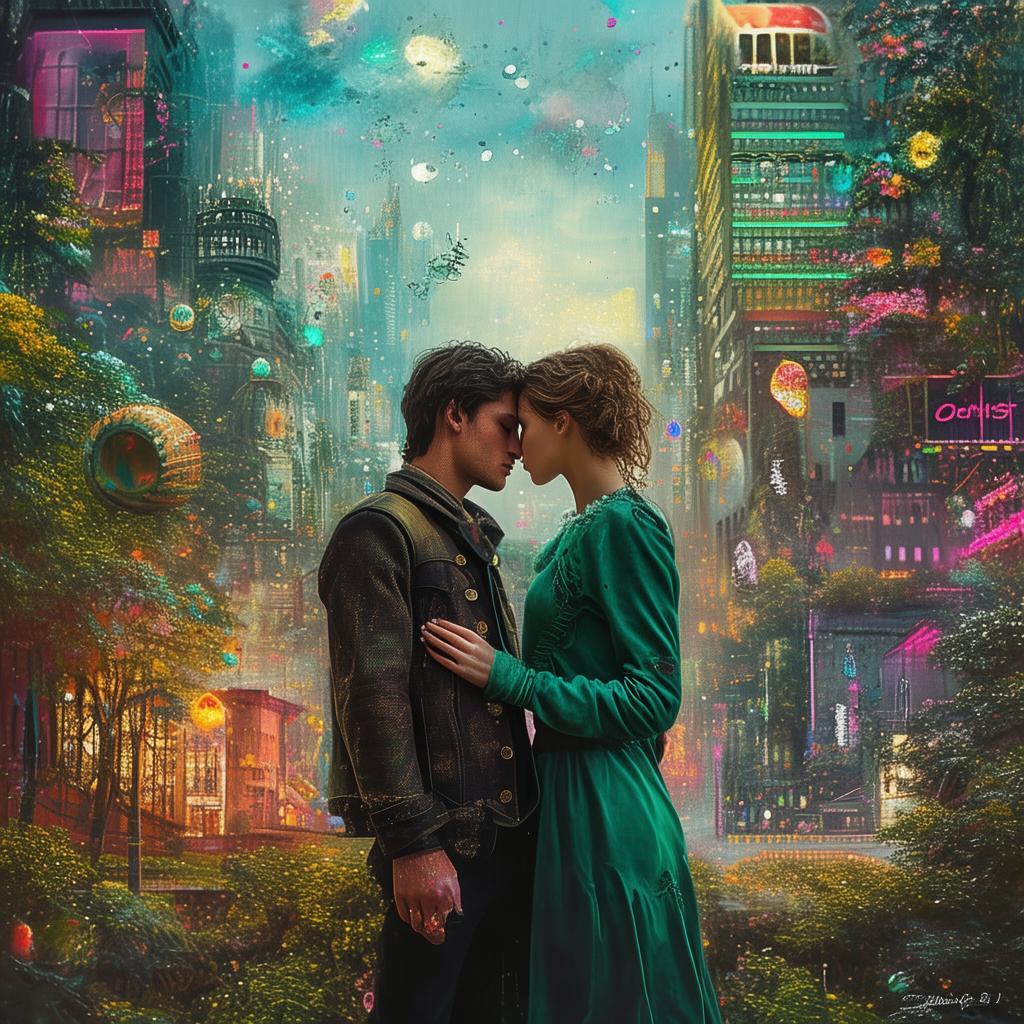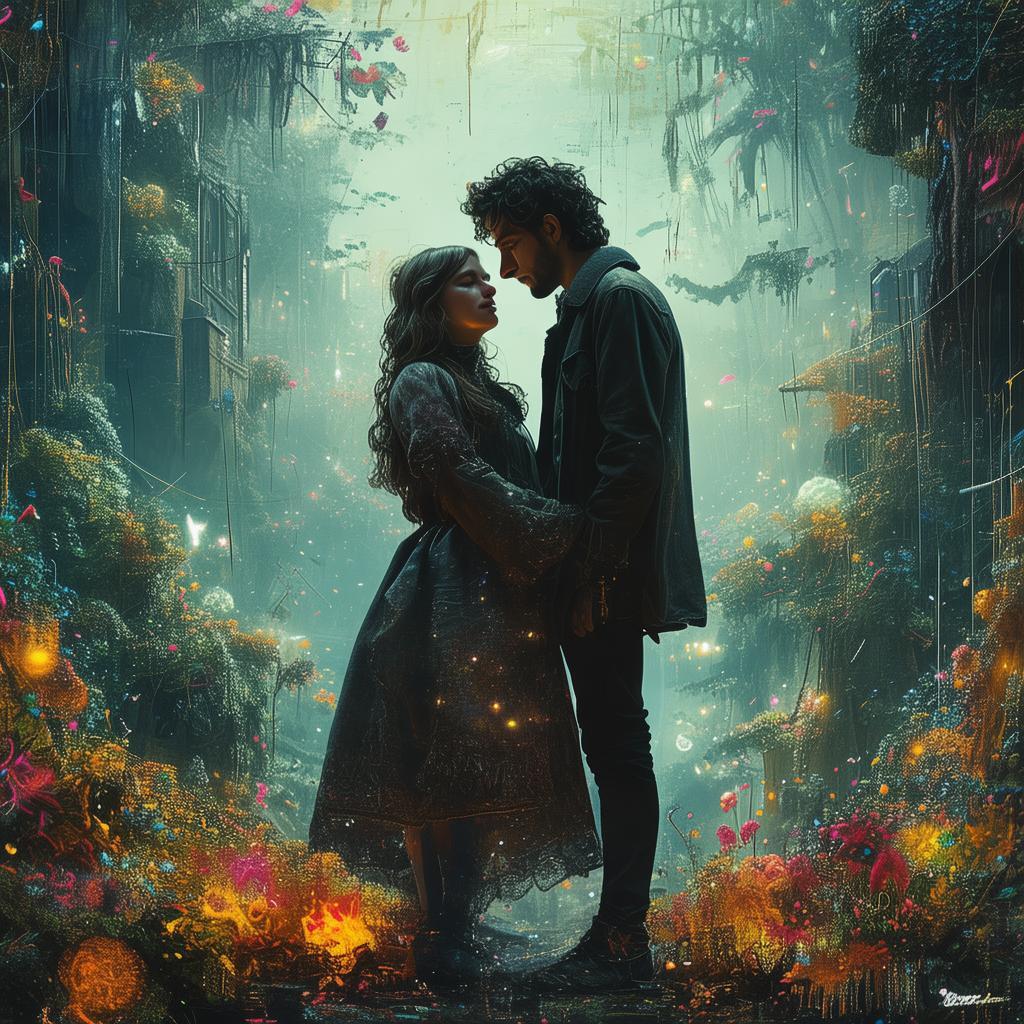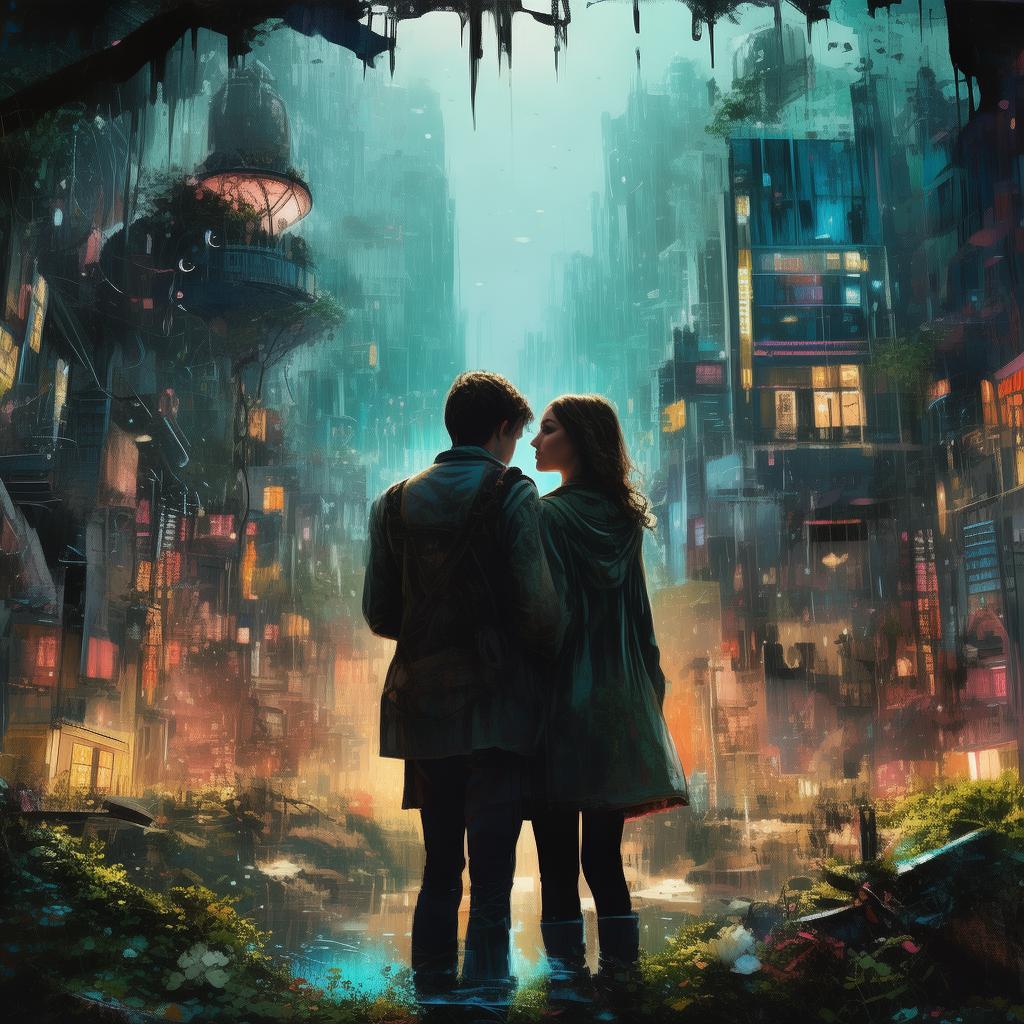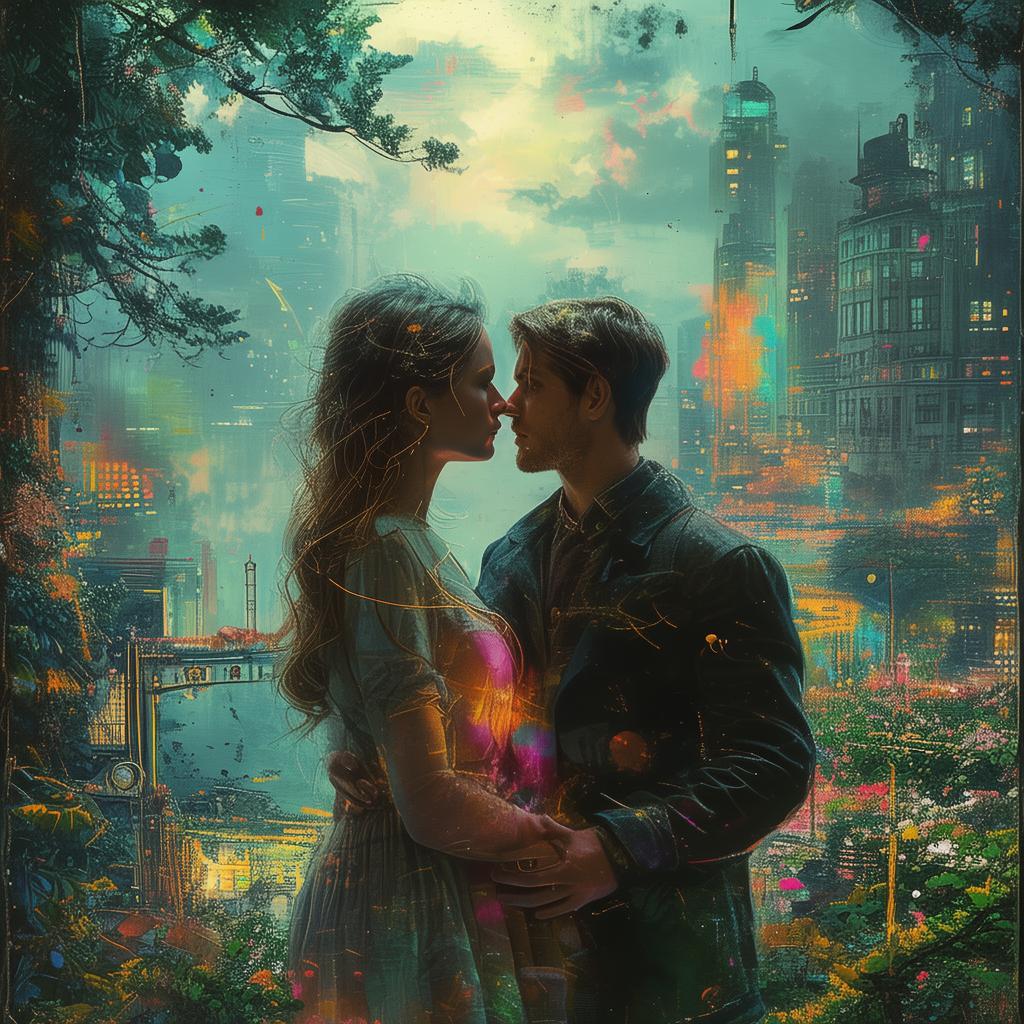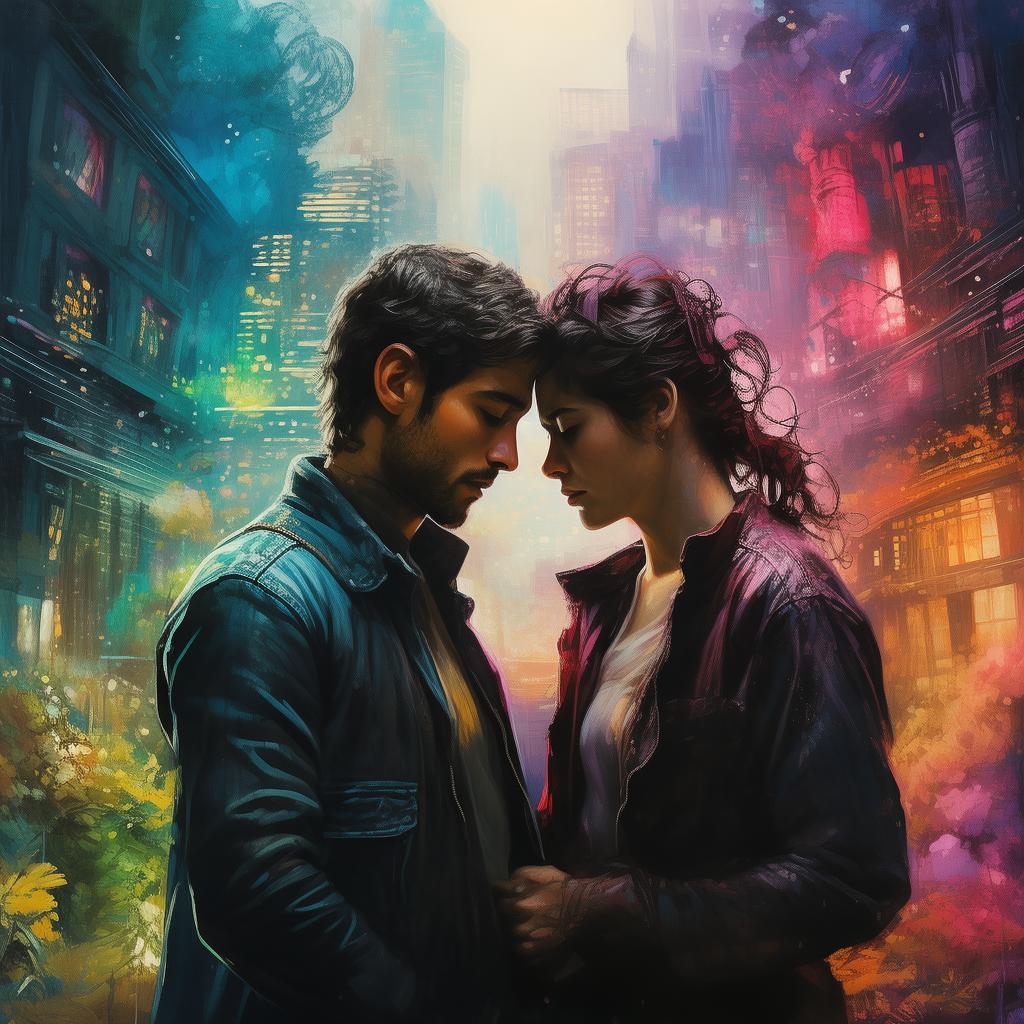Whispers of the Mona Lisa
In the heart of Renaissance Florence, the air was thick with the scent of blooming flowers and the buzz of a city alive with dreams and ambition. The streets were lined with merchants, artists, and thinkers, each chasing their own slice of the Italian Renaissance's golden age. Amidst this vibrant tapestry of creativity, one man stood out as a beacon of genius: Leonardo da Vinci.
Leonardo was a master of many trades, his curiosity and intellect stretching across the boundaries of art, science, and philosophy. His hands, though delicate, had the power to bring to life the most complex machines and the most soul-stirring paintings. But in the depths of his heart, there was a void that only one woman could fill.
Her name was Lisa Gherardini, a simple woman from a humble family. Her beauty was not of the striking kind, but it held a quiet, enduring charm that captivated all who beheld it. She was the model for the Mona Lisa, Leonardo's most famous work, a portrait that would come to symbolize the very essence of mystery and allure.
Leonardo first laid eyes on Lisa in the courtyard of the Convent of San Domenico, where she worked as a nun. She was not a nun by choice, but by circumstance, having been forced to enter the convent after her parents' deaths. Her presence was like a whisper in the bustling courtyard, a gentle breeze that could not be ignored.
The first time Leonardo spoke to her, it was in Italian, a language she had learned from her father, a craftsman. "Lisa," he said, his voice a soft murmur, "your eyes tell a story that no canvas can capture."
She looked up, surprised by the intensity in his gaze. "What story, Signore da Vinci?"
"The story of a woman who has seen too much, suffered too much, and yet still finds beauty in the world," he replied, his eyes searching hers.
From that moment, Leonardo was consumed by the desire to paint her, to capture the essence of her spirit in a way that would transcend the limits of the canvas. But the road to this goal was fraught with obstacles. The convent was a place of solitude and discipline, not conducive to the free-spirited artist's ambitions.
Yet, Leonardo was not one to be deterred. He began to visit Lisa under the guise of a religious pilgrimage, his true intentions hidden behind the mask of piety. They spoke of art, of life, of love, and in those stolen moments, a bond was forged that neither could deny.
One day, as they sat together in the quiet of the convent garden, Lisa spoke of her dreams. "I dream of a life outside these walls, Signore da Vinci. A life where I can be free to choose my own path."
Leonardo reached out and took her hand, his fingers warm against hers. "Together, we can create that life, Lisa. We can build a world where your dreams are our reality."
Their love was a whispered secret, a forbidden fruit that promised both paradise and damnation. The more they delved into each other's hearts, the more they realized that their passion was not just for each other, but for the world they could build together.
Leonardo began to work on the Mona Lisa, pouring his heart and soul into the painting. It was not just a portrait; it was a testament to their love, a silent vow that would endure the test of time. The Mona Lisa's eyes seemed to hold the promise of a future that was yet to be written.
But as the days turned into weeks, and the weeks into months, the shadows of the world began to close in on them. The Church, suspicious of Leonardo's intentions, grew ever more watchful. The political climate of Florence was turbulent, and the power of the Medici family was ever-present, a looming threat that could crush their dreams at any moment.
The tension between their love and the world they lived in became palpable. One night, as Leonardo stood before the nearly completed portrait, Lisa approached him. "I fear for us, Leonardo. The more beautiful the Mona Lisa becomes, the more dangerous it is for us."
Leonardo turned to her, his eyes filled with a mixture of fear and determination. "We will not let it harm us. Our love is stronger than any threat."
But as the days passed, the threats grew louder and more insistent. The Church began to scrutinize Leonardo's work, questioning the morality of his portrayal of Lisa. The Medici family, sensing the potential for power in the portrait, began to circle like vultures.
The final straw came when the Church demanded that Leonardo remove the Mona Lisa from public display. Refusing to comply, Leonardo was summoned before the Inquisition, his life and his art at the mercy of the Church's judgment.
In the face of this ultimate test, Leonardo turned to Lisa. "We must leave, Lisa. We must take the Mona Lisa with us, and we must run."

Lisa's eyes, once full of life, now shone with a quiet resolve. "Then we run together, Leonardo. No matter where we go, we are together."
With the Mona Lisa hidden in a secret compartment of Leonardo's trunk, they fled Florence, their love now a lifeline in a world that sought to destroy them. They traveled through the Italian countryside, their destination uncertain, their future a mystery.
As they journeyed together, the Mona Lisa became more than a painting; it was a symbol of their love, a testament to their courage and their enduring bond. Through the trials and tribulations of their escape, their love only grew stronger, a beacon of hope in a world that sought to extinguish it.
Finally, they reached a small village where they could live in relative obscurity. Here, they began to rebuild their lives, their love a secret that could never be told. Leonardo continued to work on his art, though the Mona Lisa remained hidden, a silent witness to their shared past.
Years passed, and the world outside changed, but the love between Leonardo and Lisa remained steadfast. The Mona Lisa, once a portrait of a woman, had become a portrait of their love, a silent whisper of passion that would endure the test of time.
One evening, as the sun dipped below the horizon, casting a golden glow over the village, Leonardo turned to Lisa. "You have given me life, Lisa. You have given me art. You have given me love."
Lisa smiled, her eyes reflecting the love that had become the very essence of her being. "And you have given me the world, Leonardo. A world of endless possibilities."
As they stood together, hand in hand, it was clear that their love had transcended the bounds of time and place. The Mona Lisa, once a painting, had become a symbol of the enduring power of love, a whisper of passion that would resonate through the ages.
✨ Original Statement ✨
All articles published on this website (including but not limited to text, images, videos, and other content) are original or authorized for reposting and are protected by relevant laws. Without the explicit written permission of this website, no individual or organization may copy, modify, repost, or use the content for commercial purposes.
If you need to quote or cooperate, please contact this site for authorization. We reserve the right to pursue legal responsibility for any unauthorized use.
Hereby declared.
